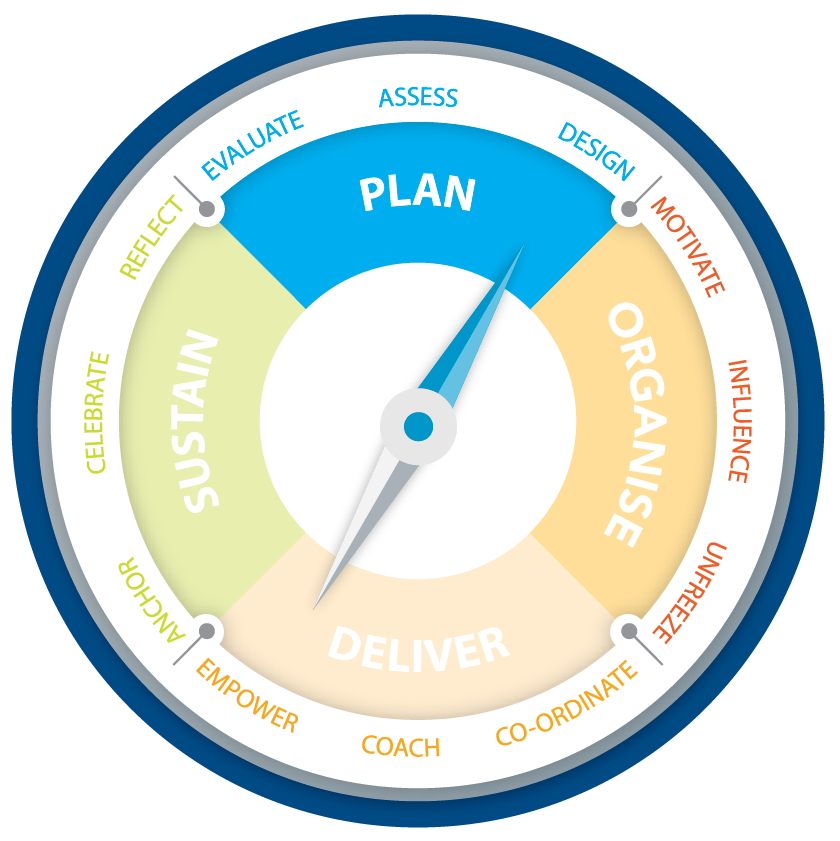
Leaders need to be open to new ways of communicating with team members, using all forums and opportunities available. The Sandar Chandelier of Communication is a
good reference.
Communicating the vision is the ability to articulate not only what the future will look like, but how it will feel, what team members will experience and what they will be doing in the future. The more detailed, rich and full-bodied the vision of the future, the more likely will be the buy-in.
Developing a vision does not have to be the responsibility of the leader alone, it can be done as part of a team approach; creating a shared vision can further engage team members and gain commitment of the change effort. Often the change elements can be presented as activities along a path towards the vision.
Team members will be more motivated to adopt a change when they can clearly see/feel/hear how the change aligns with the organisational strategy, their values, the group or team goals, and individual performance objectives.
Vision and change
Creating a vision for the future change can inspire, motivate and engage team members. A vision can also create meaning and a sense of purpose uniting people
towards a common goal.Communicating the vision is the ability to articulate not only what the future will look like, but how it will feel, what team members will experience and what they will be doing in the future. The more detailed, rich and full-bodied the vision of the future, the more likely will be the buy-in.
Developing a vision does not have to be the responsibility of the leader alone, it can be done as part of a team approach; creating a shared vision can further engage team members and gain commitment of the change effort. Often the change elements can be presented as activities along a path towards the vision.
Team members will be more motivated to adopt a change when they can clearly see/feel/hear how the change aligns with the organisational strategy, their values, the group or team goals, and individual performance objectives.
|
|
Keep the vision clear, simple and easy for a broad audience to understand. You should be able to communicate the vision in less than
a minute and it should appeal to both ‘hearts’ and ‘minds'.
|
|
Ask the group the question: “How does this change align to our team goals and objectives?” Make sure the answers are heard by all the
team members.
|
Resources:
● Sandar Chandelier of Communication (84kB download)
● Communication Planning Overview (69kB download)
● Building Rapport Handout (102kB download)
● Richness of Communication Effectiveness (53kB download)
● Change Communication Planning Presentation (704kB download)
● Communication Calendar Template (14kB download)
● Communication Plan Template (63kB download)
● Communications Strategy Plan Style 2 Sample (125kB download)
● What type of negotiator are you? Handout (385kB download)
| ©1999 - 2020 Sandar Management Services Pty Ltd |
